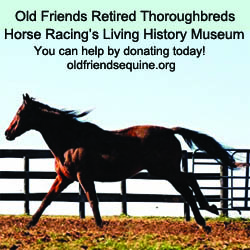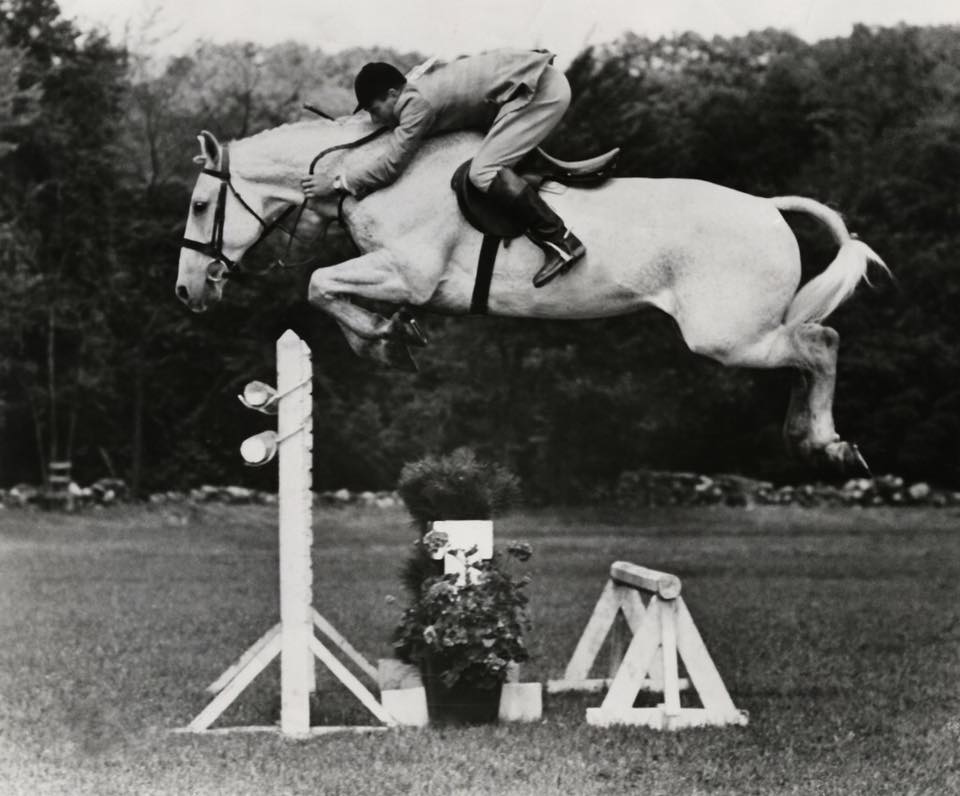
by Patricia N. Saffran
To find out how the German army treated horses in Holland during WWII, I contacted renown Dutch horseman Harry de Leyer who lived through the German occupation on his family’s farm in Sint-Oedenrode. He spoke to me at length over the phone and then said, “Come visit.” Mr. de Leyer is the subject of several books and a recent film for having bought an Amish farm horse off a truck bound for slaughter. He named him Snowman. The pair went on to show jumping fame by beating far more expensive horses and winning many major competitions.
We arrived in Virginia and drove up to Mr. de Leyer’s farm. Two Jack Russell terriers and a small Saint Bernard gave us a rousing welcome. The farm manager greeted us and said, “It’s not necessary to have barn cats with a fast Jack Russell around. One of them chases after mice.” He showed us his three resident retired prize winning Thoroughbreds in stalls and explained the empty stalls, “Harry’s health isn’t terrific and he spends much of his time in the house now. Besides my horses here, Harry has his own retired Thoroughbred who is shy and likes to be in his own pasture.” We were led to the farmhouse and introduced to Mr. de Leyer, who was sitting in his living room surrounded by a huge number of trophies, ribbons, memorabilia, and photos all over the walls of his many triumphs with Snowman and other jumpers. The latest trophy, Mr. de Leyer told us, was from the documentary about him, Harry and Snowman, by director/producer Ron Davis, which had won a prize at the Equus Film Festival in NYC last November.
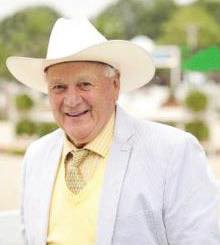
Mr. de Leyer launched right into his opinions about the Wehrmacht saying, “The German soldiers were very abusive and cruel to people, of course, but they also weren’t kind to horses. When they ran out of petrol they used horses for transportation. All the transportation was done by horses and they didn’t care if they were shot at. [The panzers may have been famous but it was horses who did 80% of the transportation.] The Germans’ cavalry horses weren’t treated much better. They used very severe bits and were very controlling of the horses. We were near the Belgian border. We saw the Germans go by on the road passing through Holland to Belgium on the way to France. It wasn’t just with tanks that they were shooting. They shot at the sides of the road from their jeeps, too . . . even at the horses. This happened several times. The Nazis also targeted the British and American planes that flew over us to bomb Germany. When their planes were hit, the flyers parachuted into the fields. The Germans tried to shoot down the Americans and British parachuting in. They shot them right in the air! [The Nazis were also notorious for shooting Allies parachuting down from the sky in France.] We found one American who died and buried him. We put up a grave and flowers and sent the photo to his parents. They were so relieved to see the photo that they decided to sponsor us in the US after the war. And that’s how we came to Greensboro SC [in 1950], and later we went to the Knox School for girls on LI where I taught riding for 22 years.”
Mr. de Leyer and his family loathed Hitler’s occupying forces. The Luftwaffe bombed Holland on May 10, 1940, and in particular targeted Rotterdam on May 14th , killing 30,000 civilians and obliterating many buildings, all to force Holland into submission, and it worked. Mr. de Leyer explained that as a teenager he helped his family in the resistance. At first, the resistance assisted draft dodgers, and at-risk freedom fighters to escape. From October 2, 1942, the Nazis started deporting Jews, and the resistance helped them to get out of Holland. He explained, “I was 10 years old when the Germans came. We had a barn, and in front of the barn was a manure area. We dug a ditch right next to this area, put a cover over it and put leaves on top to hide it. We knew they would search the cellar, but they would never go near the manure. That’s where we hid Jews, and others, one or two at time. We were trying to get them to safety.” There were times when members of the resistance had to dispatch the Nazis and Dutch collaborators to save innocent people. The resistance had to be very careful not to get caught since reprisals were harsh.
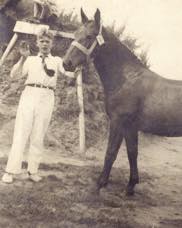
I asked Mr. de Leyer how they got those in hiding from their farm to safety. He replied, “We had a brewery, the De Leyer Brewery, that was started by my grandfather, and we also had the farm with cows and horses. My father took over the brewery and then [later] one of my brothers ran it. The German army used to stop their trains and drink our beer. They took my father’s car and truck away from the brewery. Then we had to use the horses to transport the beer and to work the farm. I hated the brewery – I liked the horses. We had ten stalls in back of the brewery. We hitched two farm horses to the beer delivery wagon with our barrels. I drove it often. We put them, Jews or British or American flyers, in the clothes that we delivered in. We drove past the German check points many times to deliver our beer to restaurants and little stores and cafes. We left the British or American flyers off there like we forgot them, until their next stop to get out of the country. I drove them many times and I was never afraid.”
Mr. de Leyer continued telling us about the delivery wagon, “There was one time I also used the beer delivery wagon to go past the German soldiers. We had a private school on the hill 25-30 miles away with 300 kids. My three brothers and me, and my father went to the school before us. There was not enough food for the 300 boys. They were all hungry. We picked up wheat from the farms we used for barley and grains for the beer. We put the wheat in our beer barrels. We sealed up the barrels on the side with tar in a large circle about 5 inches across. We loaded them at night on the wagon and turned the barrels around so the tar seals couldn’t be seen. At six in the morning, I hitched up two of our draft horses and pretended I was delivering to our stores and restaurants. I kept going past them [German check points] and went up the hill to the school. We put the barrels on the side and broke the seals. The grain spilled out. Then the school could bake bread for the kids. They had enough to eat for a month. I wasn’t afraid then either.”
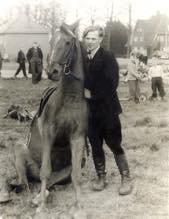
The Nazis allowed the de Leyers to keep horses for the farm and for beer delivery. Mr de Leyer said, “They let us keep the horses but every three months we had to show the horses. The SS picked them out [to take them for the army]. Mr. de Leyer said, “The SS handled the horses roughly. They smacked them around. Some of them didn’t know anything about horses. The Thoroughbreds went wild. I didn’t like it. I got upset. They took the strong, trained horses and gave us a certificate so we could replace them with young horses we had to train. They just took them and never paid for them. We used to fool them into taking a few tired older horses with sloppy ears by making them look younger. We had an old chestnut horse and put elastic rubber bands around the ears to make the ears go forward instead of flat, like he was looking straight at you. They never saw the rubber bands. We put polish on them to make them darker We hid them in the mane and front [forelock]. My father said, ‘now we’re in trouble,’ but they took him and never said anything. You had to feel the rubber bands to find them. It took three or four days for the rubber bands to break. We had an old mare Petra who was 20 years old when the German soldiers came. We hid her — they didn’t see her and we hid another horse. Petra was the champion jumper of Holland at 16. My brother showed her and she was in the 4H with him. She was a very attractive mare. A Dutch Warmblood but with a lot of Thoroughbred - she had bigger feet. We have papers on her. Before the war, I was jumping and also doing riding classes, and winning many classes. My favorite family horse for jumping was Petra.”
Mr. de Leyer spoke about the last years of the German occupation saying, “The German Army blew up the dike on the Rhine and the area flooded before the end of the war. [December 2, 1944, at Elden, Rijndijk, Over-Betuwe. The Allies scrambled in boats.] I helped get the horses in the flood. Some of them ran into barbed wire. We in the south of Holland were liberated before the north.”
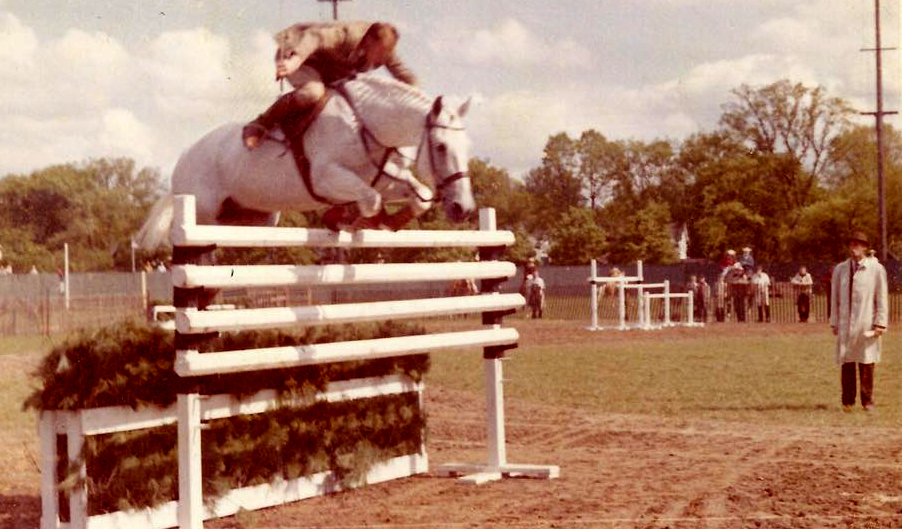
Mr. de Leyer glanced around the room at all the photos showing his jumping success after he got to the US. There are photos of Snowman, Dutch Crown, and Sinjon in major competitions. Dutch Crown was bred by Mr. de Leyer. Snowman was the Amish farm horse that Harry rescued, buying him for a mere $80 in 1956. He told us, “People ask why I picked Snowman off the truck. He looked at me and I thought they’re going to kill him for dog meat. I couldn’t let that happen. I needed a horse then. We didn’t know he could jump. When I got him home, after one month I knew could jump. I put him in the pasture. He jumped the pasture fence to go eat in his stall, his hay and grain. This was before I tried to sell him down the road and he kept coming back to me. I sold him 7 miles away to Stony Brook and I was in St. James. I heard clack clack on the road on the cobblestones. I said to my wife, ‘that’s Snowman.’ She said, ‘you sold him to Dr. Rugen.’ I said, ‘I know where I sold him.’ I knew I had to keep him. He was the quietest horse you could ride. The girls at the school rode him.” Two years later, Mr. de Leyer and Snowman won the triple crown of show jumping.
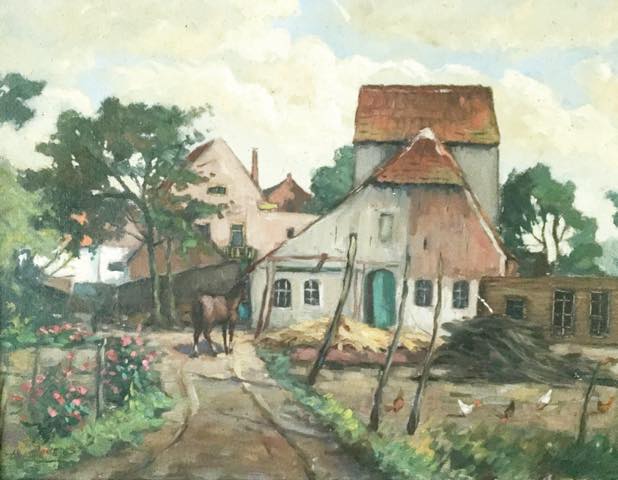
I asked Mr. de Leyer about his extremely forward seat position for jumping. Today Roger-Yves Bost of France also leans forward in this manner with his legs way back, leaning over the horse’s neck. Mr. de Leyer answered while pointing to a photo, “In this photo Snowman and I jumped 7’1” at Fairfield and I didn’t use the reins at all. I only held on with my knees. It’s more athletic. The horse can jump better if he uses his head and neck for balance. I used loose reins and I only used a rubber snaffle bit with Snowman, and all my horses. I discovered rubber snaffle bits during the war.” I asked Mr. deLeyer how he came to his usual style of jumping. He said, “When I was young I used to go to all the shows nearby and I watched every horse and rider. There was an indoor ring near the brewery. We practiced there. I was in horse shows when I was 6 years old. When we rode in shows 8 miles away, we would lead the horses there. Somebody drove the hay wagon and we sat on it and led the horses. I was lucky, before the war, Dutch jumper Jan de Bruine had this forward style and he taught me. He won the silver medal on Trixie in the Olympics in Berlin [Dutch team silver medal 1936.] He taught me to ride to reward the horse by not hanging on to his mouth and to be soft and forward. I was 8 years old when I started taking lessons from him. They put me in a team class in the middle of the older riders. When de Bruine said turn left or right, I could follow the other riders. I got a 4H diploma and the 4H boys practiced in our indoor ring. He used a snaffle bit with his horses. After the war, I watched German rider Hans [Günter ]Winkler in Antwerp and other places in Holland. He rode forward. He won the Olympics in Stockholm [in 1956, individual and team jumping gold] on the great mare Halla. After the war, in Holland, I also saw the Italian cavalry d’Inzeo brothers jumping with a soft forward style. The Italians rode more forward than the German riders. They were in the military but they also did show jumping.”
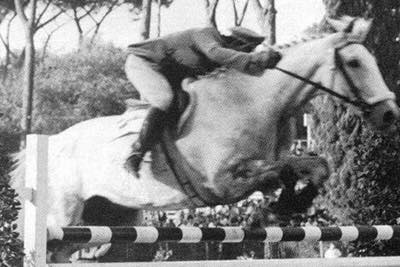
Mr. de Leyer showed us a photo of him jumping the Thoroughbred Sinjon. Mr. de Leyer said, “He came right from the racetrack. I bought him in Wheeling, West Virginia. I fox hunted him and then I sold half of him to Mr. Deneen. He had two girls riding with me and he wanted to have a good horse for them. Then I loaned my half to George Morris.” Sinjon was trained for jumping in 4’2” classes. The rising show jumper George Morris was impressed with de Leyer jumping Sinjon in 1957 at the North Shore LI horse show. Mr. de Leyer explained, “I jumped Sinjon on a soft loose rein with a rubber bit. That’s my trademark. George Morris offered to buy Sinjon. ‘He said I want him,’ but I said, ‘I won’t let you buy him, I’ll loan him to you after I jump him in Madison Square Garden. After I jumped him, I handed him the reins and said, ‘where do you want to put him?’” I didn’t know which horse I was going to ride next. Then the next year Snowman came out and I rode him in Madison Square Garden and he was champion. George Morris rode Sinjon in the Rome Olympics and he was second [US team silver medal 1960.]” Mr. de Leyer jumping Sinjon, Snowman, Dutch Crown and also Wayward Wind and Night Arrest went on to win many other championships, and he was a member of the United States Equestrian Team.
The discussion went back to training horses with Mr. de Leyer saying, “When I was a kid, we rode every horse in a halter. It was a habit of mine not to use a bit. I didn’t need a bit. All the horses I break, young horses, two years old, I use a rubber bit.” I asked Mr. de Leyer how he places a saddle on a green horse. He answered, “When the horse is eating in his stall, I put the saddle on him. He looks where the food is and he doesn’t pay attention that way. I put him on a lunge line with the saddle on him outside. Then I put him back in the stall, and I have a little step ladder and get on him while he’s eating.”
|











